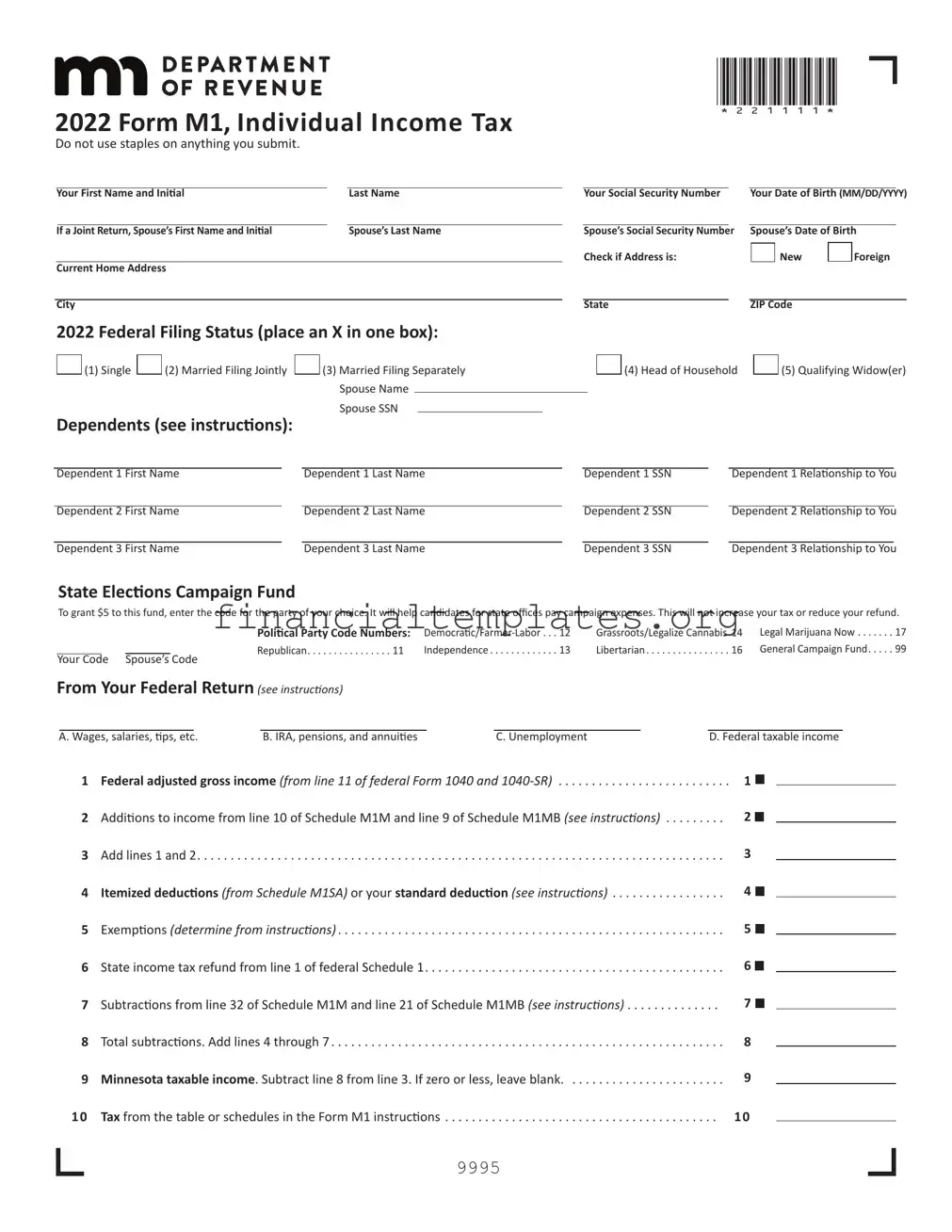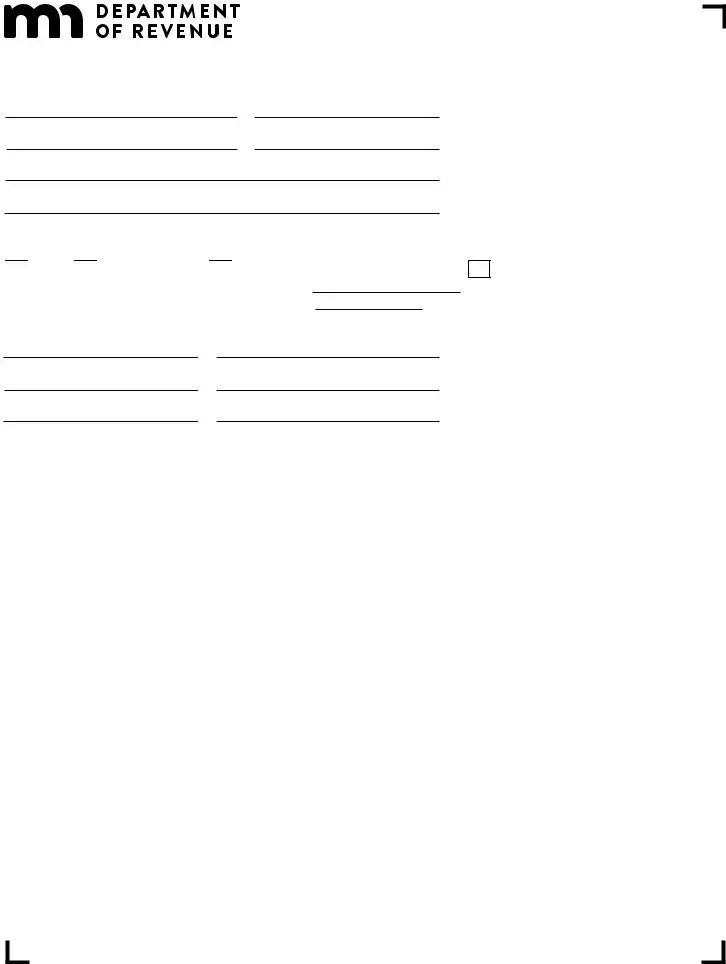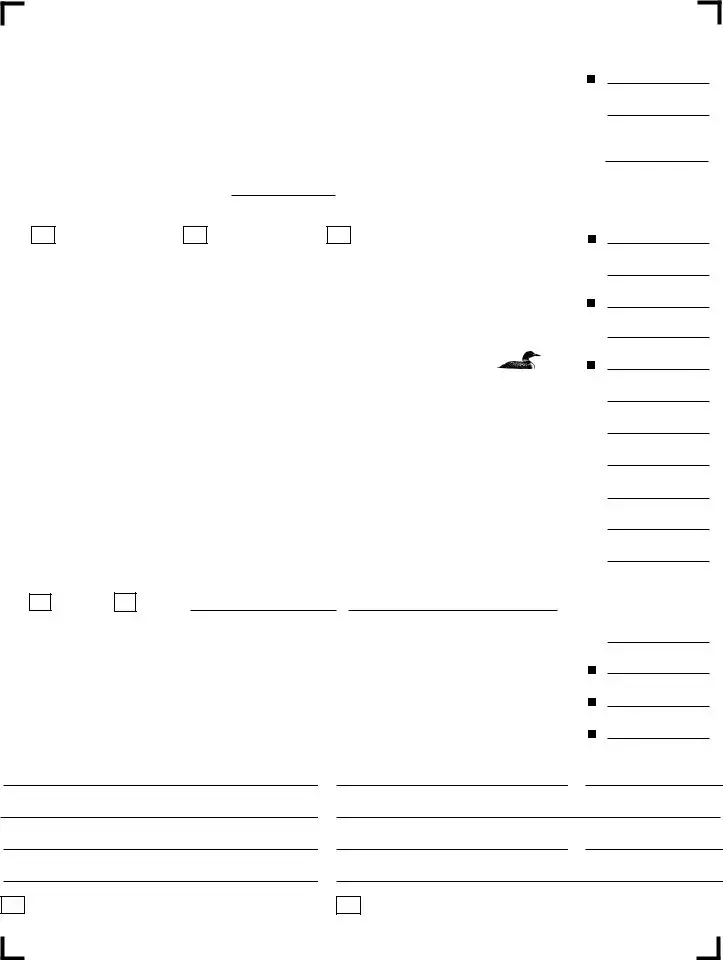The 1040 Individual Income Tax Return form is quite similar to the Tax M1 form. Both documents are designed to collect income information and calculate the amount of tax owed or the refund due to the taxpayer. They gather personal details, including names, Social Security Numbers, and filing status, and they require information on income, deductions, and credits to determine the correct tax liability. Where the M1 form is specific to Minnesota, the 1040 serves as its federal counterpart, underlining their fundamental purpose of tax collection and compliance on different governmental levels.
Form W-2, Wage and Tax Statement, while primarily an information document provided by employers to employees, shares common ground with the M1 form. It details the employee's income and taxes withheld throughout the tax year, information that is crucial for correctly filling out the M1 form. This document directly influences the accuracy of the income and tax withholding sections on the M1, underscoring the interconnectedness of employment and personal income taxation processes.
The Schedule M1W, Minnesota Income Tax Withheld, is intricately linked to the M1 form, complementing it by providing detailed information about state income taxes withheld. This schedule is where taxpayers list out the specifics of their withheld taxes, paralleling the way federal withholdings are reported. It's necessary for taxpayers to ensure they receive credit for all state taxes withheld from their income, making the M1W a critical document in the state tax filing process.
Schedule M1M, Additions to and Subtractions from Minnesota Income, serves as an adjunct to the M1 form, allowing taxpayers to adjust their income for specific items that affect state tax differently from federal tax. This schedule is key to aligning state taxable income with federal guidelines while accounting for Minnesota-specific adjustments, illustrating the complexity of state-federal tax coordination.
The 1099 form, used to report various types of non-employment income, has a connection to the M1 form through its role in influencing the taxpayer's adjusted gross income. Different variants of the 1099 document income such as dividends, interest, or independent contractor earnings—each impacting the total income reported on the M1. The relationship showcases the broad spectrum of income sources considered in personal tax calculations.
Schedule M1SA, Minnesota Itemized Deductions, is akin to the itemized deductions schedule of the federal tax system, tailored to the state's tax code. This document provides a framework for Minnesota residents to detail deductible expenses that reduce taxable income, akin to its role on the federal level but within the state's specific allowances and limitations, emphasizing the customization of taxation by jurisdiction.
Schedule M1C, Nonrefundable Credits, similarly complements the M1 form by detailing the specifics of various tax credits taxpayers are eligible for, which directly decrease the amount of state tax due. This mirrors the process of claiming credits in the broader tax system—applying targeted financial incentives and relief within the calculated tax framework of the M1 document, illustrating the government's role in influencing taxpayer behaviors through fiscal policy.
Schedule M15, Underpayment of Estimated Tax by Individuals, might be required alongside the M1 form for those who didn't pay enough tax throughout the year through withholding or estimated tax payments. It emphasizes the necessity of accurate pre-payment throughout the tax year to avoid penalties, underlining the tax system's pay-as-you-go principle and its implications for individual tax planning and compliance.



 (1) Single
(1) Single 
 (2) Married Filing Jointly
(2) Married Filing Jointly 
 (3) Married Filing Separately Spouse Name
(3) Married Filing Separately Spouse Name



